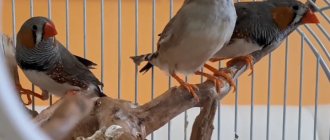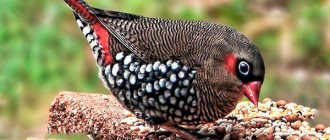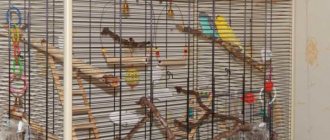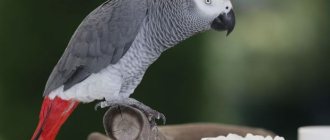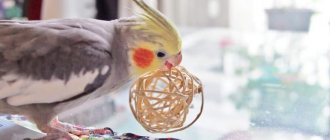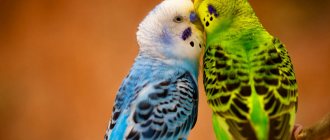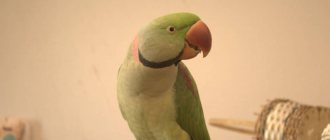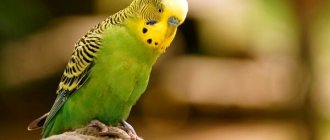Description
Small, funny birds with interesting plumage colors and melodious voices - these are all finches. They owe their popularity, of course, to their bright plumage.
Externally, finches can be divided into three large groups:
- The first group is African, or also called wax-billed weavers.
- The second group has a less bright color, most often cream and coffee shades.
- The third group - with a very bright and variegated color, which can have more than five different colors - are the Australian grass finches.
Females and males often do not differ in color. Often these birds are also called Chinese sparrow. They are gregarious, so it would be better to take at least a couple of different-sex individuals, and better yet, more if the conditions allow. In the wild, the zebra finch lives in Australia, the Sunda Islands, the USA and Portugal.
Appearance
These are small birds whose body length does not exceed eleven centimeters. The bright color begins to appear only 70 days after the bird is born.
The female has black stripes on her head and the plumage is less bright. Males, on the contrary, are brighter. Young chicks are distinguished by the peculiar texture of their beak, which is painted black. There are a large number of species of finches, and therefore the color of individuals can be different.
Story
At the moment, scientists have not clearly determined the exact ancestor of the finches. These birds have been domesticated for more than 400 years. Although this species is generally considered to be Japanese, the original breeding began in China.
After some time, several birds were transported to Japan, where breeding was taken more seriously, and new varieties were bred there. The Japanese finch in the photo shows that not all species are bright and full of colors in their plumage.
Varieties
There are different types of finches bred by breeders:
- Japanese and pearl Japanese;
- zebra;
- white;
- rice;
- sharp-tailed;
- red-necked;
- chestnut-breasted;
- scalyheads;
- Gouldian
Japanese finch
The list of the most domesticated finches ends with the Japanese finches. Inconspicuous compared to other species, it is colored brown above and gray below. This is the most common option, but there are also yellow and red birds, and with tufts on their heads.
The singing of Japanese finches resembles the squeaking of a rubber toy, and is quieter than that of most other finches. Only gentlemen sing.
The name explains the fact that the widespread distribution of this species came from Japan. Japanese finches are selectively bred. Today, due to its kind temperament, this type of bird has earned high marks from poultry farmers in Russia, Europe and America.
Japanese finches are often purchased in addition to other species as foster parents. They happily hatch the eggs of other finches and take care of abandoned chicks.
Necessary conditions for keeping
Finches are birds whose breeding at home requires attention to all factors: temperature, air humidity and lighting. A balanced diet will help finches grow healthy and active.
Air temperature and humidity
Birds will need a stable temperature regime, within the acceptable range from 16 to 23 degrees Celsius.
Air humidity should remain at an average level, since various sudden changes can negatively affect individuals and even lead to their death.
Lighting
An important feature of caring for finches is proper lighting. The development and well-being of birds directly depends on it. They can be exposed to direct sunlight from 40 minutes to 3 hours a day. If the pet is not exposed to enough ultraviolet rays, the growth and development of the finch may slow down, and the likelihood of rickets is also high.
Excessive sunlight may cause a decrease in appetite and activity.
In the spring, from about mid-May, the cage with the birds can be taken outside or into the garden. Birds should not be left in the sun; they need to have an independent choice of where to be.
Basic information
Amadins are small birds, weighing no more than 30 g, belonging to the finch family. The peculiarity of birds is their singing. With their voice, males attract females during the mating season and show others their mood. Their beak is large and black at birth, becoming red over time, closer to an orange hue.
Today, about 40 species of finches are known. Only a few of them are used for domestic keeping: penguins, white, black-headed, silver, zebra.
Fact! The color of the female finches is more subdued so that predators cannot notice her while hatching her eggs.
In captivity, birds live on average 10 years, although there are known cases of finch life expectancy of up to 15 years. This factor is influenced by stress, improper care of birds, injuries and poor living conditions.
Amadins are inquisitive and simple-minded, like children. They quickly get used to people and have good intelligence. Life alone is unbearable for them, they begin to get sick and may even die. They are not afraid of their owners until they want physical contact: to stroke the bird or hold it in their hands. They are not trainable.
Preparation
If you decide to choose a finch as a pet, you should prepare well for this and buy everything you need. Immediately stock up on the necessary food, a cage that meets all the parameters and, of course, the proper knowledge.
Cage requirements
A finch will need a spacious house. These birds are playful and nimble, and the large volume of the cage will allow them to satisfy their activity without the risk of injury. Not only the size is important, but also the material from which the birds’ housing is made.
Everything you need is placed in the cage: a drinking bowl, feeders, bathtubs and perches. If you plan to tame the finch, it is better that it opens from the top.
If you take a couple of individuals to begin with, then a house 60-70 cm long, 45-55 cm wide and 45-50 cm high will be enough for them. Then the bird will be able to freely spread its wings, fly from place to place, and jump onto a perch without catching the rods with its wings.
If your plans include breeding finches, then you should immediately purchase a larger cage, or one additional one, since the grown chicks will also need space. In an ideal situation, each nesting pair is placed in a separate housing so that other birds cannot damage the eggs.
A small cage for finches can cause them to become obese due to reduced activity.
The shape of the cell is rectangular. Birds will feel uncomfortable in a round, trapezoidal or square cage. Finches often like to hide in corners when they feel danger or want to rest; in a round house they will not have this opportunity.
You cannot place unnecessary parts inside the bird house that could impede the movement of birds: no openwork pyramids, turrets, curlicues or balconies. In this case, the birds will not be able to hurt themselves if they move. All these excesses and beauty only add complexity during cleaning.
As for the material, copper and zinc should be excluded from the list of permitted ones. These materials are toxic to birds. Copper oxidizes over time and has a detrimental effect on birds, and zinc can peel off and enter the bird’s stomach, thereby poisoning it.
The paints used to paint some cells can also be toxic, namely oil and enamel paints. Powder paints are not so dangerous and are acceptable for painting. It is better to take black or brown color, since against the background of light or brightly colored rods all the beauty of the finches will fade.
You can also take a wooden cage, but not one made of bamboo - it quickly becomes unusable. The advantage of wooden houses is noise absorption, but, in turn, they do not tolerate treatment with steam and disinfectant.
Polycarbonate, acrylic glass or plastic will be the best choice. They are non-toxic and can be easily disinfected and treated using various methods of sanitization.
An important feature when choosing a cage is the presence of a retractable tray. It will significantly simplify cleaning, and you won’t have to frequently disturb the inhabitants of your home. The tray should slide out without much effort and have large walls of at least 10 centimeters. Such sides will prevent the filler from spilling out when birds are very active.
Plastic or metal are often used to make a pallet, but these materials are quite slippery, which can lead to injury. It is not recommended to choose a plywood pallet: it will quickly become unusable due to time, moisture and dirt.
River sand should be poured onto the bottom, which should be pre-treated. Rinse and bake in the oven to remove possible parasites. You can add grated chalk, coal or ash to the sand. Specialty stores sell bird litter made from gravel or paper; these can also be used.
Fungus may begin to develop in the tray filler; to prevent this from happening, the filler needs to be changed. Paper needs to be changed often - every other day, but gravel, sawdust or sand less often - once every four days. Newspapers and magazines should absolutely not be used; birds may become addicted to pecking at paper and thereby become poisoned by printing ink.
Arrangement of the cage
There should be two or three perches in one cage. They need to be installed so that when moving the birds do not cling with their wings or tail to the perches and floor. The material should be chosen just as carefully, because the birds spend a sufficient amount of time on them. The diameter of the perches usually varies from one to two centimeters. It is important that the perches are different. Then the birds will not develop inflammation of the fingertips.
Rubber, cement, plastic are unsuitable materials, as inquisitive birds can break off a piece from them and accidentally swallow it, causing harm to themselves.
The best material for perches is wood, but not every type of wood is suitable. Bird cherry, red maple, acacia, oak, poplar and coniferous trees will be dangerous for finches. Fruit trees, willow, aspen, linden, and birch are perfect.
You will need several feeders in the cage - for different types of food. They should be made from non-toxic materials. A good option would be feeders made of silicate glass, plastic, stainless steel, ceramics or porcelain with a height of about 2.5 cm, so that the birds do not scatter food around the cage while eating. Preference should be given to suspended or automatic models, as this will allow less dirt to get into them.
Feeders should not be placed near the perches, but in different parts of the cage, so that it is convenient for the birds to eat food and they are more likely to be active. Feeders should not be placed under the perch, as this will ensure that droppings get into them. You can’t place them near a drinking bowl - water will get in there. Feeders should be cleaned every day. If finches are not feeling well, feeders are placed within maximum accessibility.
Drinkers should be of the closed type. Finches love to swim and can use open drinking bowls for other purposes, which will lead to water contamination and further poisoning of the birds. Metal drinking bowls are not suitable in this case, since the water in the metal will oxidize. Porcelain and glass would be the best materials for drinking bowls. Their placement should be given due attention: they should be suspended, but not under a perch or perches, so as not to contribute to their contamination.
Where is the best place to place a finch cage?
You should choose a place near the window along the wall. An important condition for the proper development of the bird is light; the finch needs to be in direct sunlight for 2-3 hours a day. The cage is placed half a meter from the floor, on a stable surface. Also, the “dwelling” of birds should not be in drafts, since these finches are very afraid of sudden changes in temperature.
Quarantine and transport cages
You should immediately ensure that you have a transport and quarantine cage. Quarantine is usually smaller in size than the main one. The new bird is initially placed in it so as not to introduce any infection into the main “house”.
Small bird
The homeland of finches is the hottest continents: Africa and Australia. They also live in southern Eurasia and southern China.
In nature, as in captivity, they prefer to live in a school, or, in extreme cases, in pairs. They need partners and friends to actively spend time together - finches love to flutter, circle and jump from branch to branch.
Brothers in the order of our familiar sparrows and crows, finches are distinguished by their spectacular plumage that fits tightly to the body and a large “waxy” beak. Most species are small in size - from 10 to 12 cm in length, and very light - on average 13 g.
Note!
- Parrot: tips for choosing, the best breeds and rules for training different types of parrots (100 photos)
Eagle bird: description, species, lifestyle, habitat and interesting facts about the bird of prey (95 photos)
Parrot cage - features of choice
Amadins take their roots from the family of songbirds, and accordingly they are able to loudly make various sounds. Their spoken and singing vocabulary is very wide: from quacking and chirping to subtle artistic whistling.
Due to the laws of animals, loud singing and bright appearance predominate in male birds; female finches are quieter and inconspicuous in color.
Purchase
Amadins are far from exotic birds, and purchasing them will not be difficult.
Many also wonder how long finches live at home? They live for about ten years, so you should be careful when purchasing.
Where can I buy?
Sold in almost every pet store. But the best option would be to contact nurseries, directly to bird breeders. There, finches receive proper care and attention from birth. Breeders will tell you all the necessary information, give advice for the first time and help with the choice.
How many birds are needed?
Many people take only one individual when buying, but this approach is not correct. Amadins are flocking birds, and one bird will be bored and lonely, which can lead to various diseases. A good option would be to buy a mixed-sex pair.
Price
The average cost of one individual is 4,000 rubles; the price between breeders and pet stores does not vary much, so the choice here is obvious.
Criterias of choice
The main thing when buying is to buy a healthy bird. You can understand her condition if you carefully examine and observe her. A healthy bird is active, with fast and springy movements, a voice without hoarseness, shiny eyes, it is moderately well-fed. You can ask the owner to catch the specimen you like in order to carefully examine its plumage and skin. If the skin has a pinkish tint, then everything is fine.
Transportation
It involves the use of special cages that are very small in size so that the bird does not rush around inside, causing injury to itself. The cage should be wrapped in dark cloth, creating twilight.
Amadina for home
When purchasing a finch, you need to make sure that the bird is healthy according to the following parameters:
- normal weight,
- ringing voice
- sparkling eyes,
- light skin with a pink tint,
- absence of insect parasites.
You need to acquire two individuals of different sexes at once; alone, the finch will wither and die.
Birds are very timid; moving can literally scare them to death. Therefore, transportation should be carried out in a comfortable cage, hung with a dark cloth.
After purchase, it is advisable to submit the bird's droppings to a veterinary laboratory for the presence of parasites.
Maintenance and care
Finches should be carefully looked after. Clean the cage in a timely manner, disinfect drinking bowls and feeders. Trim the wings, watch the beak and claws of your charges. You should also create a balanced diet.
Bathing
Bathing is one of the favorite activities for these birds. This is very exciting to watch; when swimming, finches briskly flap their wings, splashing water in different directions.
The bathtub should be small so that the bird does not choke. The water level in it should be one and a half centimeters. After finishing bathing, it is better to take the bath away to change the water in it.
Shedding
Molting lasts for 20 days. At this time, there is a deterioration in the birds' appetite and a decrease in their activity. Males stop singing during molting.
During these periods, finches need mineral nutrition and plant food. The color becomes much brighter after the molting is over.
Wing clipping
Birds are often caged throughout their entire lives and do not require wing trimming.
Beak and claw care
Finches are domestic birds, so the care of their beak and claws falls entirely on the owner. To do this, the cage must contain various wooden objects, a mineral stone, and a special beak sharpener. In this case, the birds will be able to get rid of the stratum corneum on their own.
Cleaning the cage
It is necessary to change the filler on time, wash the feeders and drinkers every day, preventing the accumulation of mucus and dirt. You should also periodically treat the cage with a special disinfectant solution, which can be purchased at any pet store.
Necessary equipment
To clean the tray you will need a broom and dustpan. The cleaning itself is not difficult, but requires care.
How to clean properly
When cleaning the cage, you should not make sudden movements so as not to scare the inhabitants. The pallet must be carefully inspected, removing all accumulated dirt on the walls.
If you decide to wash the cage frame, you should dilute hot water with a special solution, and then wash everything thoroughly and carefully.
Price
Exotic birds must be purchased from specialized stores or directly from experienced breeders. Birds purchased from unknown persons may be infected with parasites, viral or fungal infections. The price depends on the age, condition of the bird and its type. Young female zebra finches cost from 400 to 600 rubles. Gould finches will cost more - in the range of 3000-4000 rubles. It is necessary to purchase a non-closely related opposite-sex pair. On average, these birds can live about 10 years under normal conditions.
If you liked the article or have something to add, then leave your comments and also join our VKontakte group.
Nutrition
Finches are not too picky about food, but this does not mean that any food will suit them. Their diet should be balanced and contain proteins, fats, carbohydrates and fiber.
Recommended Products
Amadins are fed mixtures of various grains. Dandelion leaves and some vegetables are also used in feeding.
Diet
You should adhere to a certain feeding regimen for the beautiful birds:
- Grain feed - 1-1.5 tablespoons daily.
- Mineral feeding should always be in the cage; it can be grated shells or chalk.
- Protein feeding (soft food) – once a week, 1 teaspoon per individual.
- Protein feeding (live food) - 5-10 worms per individual no more than once a week.
- Plant nutrition (herbs, vegetables) – once every 3 weeks, cut into small pieces.
- Dried fruits and berries - no more than once a week.
Mineral supplements
Birds need mineral supplements all year round, so they must be kept in a cage at all times. These can be grated shells, chalk, sand, eggshells, or you can purchase special mineral supplements at pet stores.
Drink
Finches living in captivity must have constant access to sources of drinking. Water can be poured into drinking bowls either filtered or settled. It needs to be changed every day.
You can give juices of tomatoes, beets, apples or carrots. After two to three hours of keeping the juices in the drinker, it should be removed to prevent possible gastric upsets.
Prohibited Products
Prohibited products include onions, garlic, parsley and dill, which contain essential oils that are harmful to birds. You cannot use food for other birds, they have different diets, which can lead to lethargy in your pets.
Avocado, mango, persimmon and papaya contain toxic substances. Food from the human table is also strictly prohibited.
Diet features
To maintain a comprehensive diet, finches' diet includes proteins, fats, carbohydrates and fiber for good growth and development.
Adults
The basis of the diet of adult birds is grain feed. You can easily purchase them at a pet store.
Soft food should be rich in protein; for its preparation use:
- grated boiled egg yolk;
- egg shells;
- fresh carrots;
- meadow grass seeds.
After serving the mixture, it will need to be removed after 30-40 minutes, otherwise it will turn sour.
You also need to feed finches at home with live food: worms, larvae, maggots and bloodworms are well suited for this. Live food will be especially useful during breeding.
During the chicks hatching period
During this period, parents need to feed various weed seeds and protein foods. Therefore, at some point they begin to regurgitate it from the beak to the chicks.
Laying eggs
After all the preparations are completed, the owner, in anticipation, wonders how soon the finches will begin to lay their first eggs. If the owner’s efforts are appreciated and the birds are provided with a nesting house, then a week after mating, the finches begin to lay eggs. There will be from 4 to 7 pieces in total. A young female has no more than 3 of them. She lays one egg per day. As soon as the finches have laid 2 eggs, they begin to hatch them.
During this period, it is necessary to maintain silence and not disturb the birds. It is better to leave them alone in the room and not approach the masonry. It is important to protect pets from drafts. It is good to find out how many days or days the finch incubates the eggs, so as not to miss the hatching. If the female is not ready to feed the offspring, she will need help.
Taming
The success of taming depends on daily practice. It will be much easier to work with barely fledged chicks who are just discovering the world. Adult birds have a mature character, they are more difficult to make contact and get used to new things.
An important rule when taming is that you should only train one bird at a time. To begin taming the finch, you should place the “student” in a separate cage. Let him get comfortable there and start the lesson.
The first thing you can try is to make the bird jump onto your hand. To do this, carefully put your hand into the bird’s cage so that it huddles in a corner, and the only possible movement option for it is to jump on your hand.
When the bird gets comfortable and gets used to being on your hand, you can carefully try to take it out of the cage. An important point here is to trim the wings so that the bird cannot fly out the window or harm itself in any way.
If you get the bird out of its cage, put it on your shoulder and go about your daily quiet activities, watching a movie, reading a book. This is necessary so that the feathered friend gets used to the environment and feels more confident.
The tame finch should have some kind of place in the room: a play corner or stand, a chair, or maybe several perches where the bird can rest from a walk.
Socket options
The appearance of a nest is a signal for the beginning of the mating season. For a pair of finches, at least 2 nests are installed in the enclosure. Manufacturers themselves choose the appropriate one. You can offer birds the following nest options:
- Open basket. Constructed from willow twigs, vines or hemp rope. Has an open top.
- Closed basket. It is woven from willow twigs. It looks like a ball with a small entrance.
- Open box. Made from plywood. Does not have a front wall. Equipped with a removable lid and has a recess at the bottom.
Reproduction
Breeding is a serious step and requires a responsible approach to the matter. To produce good offspring, both individuals must be healthy.
Amadins should not mate during molting. The best time for reproduction will be spring-summer, at this time there are plenty of natural vitamins, and the weather outside is warm.
Conditions
It is necessary to create the proper conditions for reproduction. Dry grass, hay, and moss should be placed in a closed nesting house. Some material should simply be placed in the cage to encourage the male to build a nest.
During nesting, the cage should be carefully cleaned to prevent the appearance of parasites.
Caring for chicks
After the chicks are born, the parents feed them and warm them with warmth. When watching finches, the main thing to note is the moment when the parents begin to feed the chicks with food, it is then that the diet needs to be supplemented with protein food.
When the chicks are seven to nine days old, they will begin to fledge. To help them at this stage, add mineral supplements, weed seeds and other plants to their parents' food.
You can tell if the chicks are full by their sounds. If their parents feed them well, the chicks remain silent for most of the time.
There are situations when, for some reason, birds refuse to fulfill their parental responsibilities. The reason for this could be many different factors. In such cases, you will have to feed and warm the babies yourself.
Mating games - a signal to install a nest
After a successful acquaintance, the male begins to court the female: feeding her, singing short songs or making characteristic sounds.
Then the finches begin the so-called mating games. Males perform ritual dances, fluff up their plumage, showing the bride all their talents. Females nod in response, dance along, and make short, quiet sounds.
But male parrot finches do not have a “wedding dance” in their arsenal of love. They simply chase their partners around the entire cage, performing simple songs.
If you notice that the birds are engaged in mating games, install a nesting base in the cage. The article “Nest for finches” will help you choose the right one. If you don't know where it is more convenient for your pets to nest, give them two or three options to choose from.
After installing the nesting base, you must not move the cage, otherwise you can throw off the birds’ entire love mood. Therefore, install it in advance in the brightest place in the room, at a height of one and a half meters from the floor, where there are no drafts.
In order for the birds to build a nest to their liking, you must provide them with building material: hay, soft blades of grass, sisal, coconut fiber, small feathers, paper torn into shreds.
Lay it all out at the bottom of the cage, insert it between the rods, and place it in the nesting base itself. Under no circumstances give finches threads, scraps of fabric, or cotton wool. In such material, chicks risk becoming entangled, injured or suffocated. If the parents get caught, they may accidentally step on the egg or crush the chick.
Taking care of your health
Amadins are susceptible to all the same diseases as most birds. The right way to take care of your health is to have a balanced diet and ensure long daylight hours. If you carefully monitor your pets, they will always be healthy and active.
The first signs of disease
The first signals of a disease may be a decrease in activity in birds. Apathy, half-open eyes, wheezing and ruffled feathers are also a signal that something is wrong with the bird.
The first thing to do is to put the “sick” in a separate cage, then go to the veterinarian.
Anyone who is suspicious should see a doctor
Lethargy, drowsiness, lack of appetite, diarrhea - all these are symptoms of many diseases or stress. If a bird has at least one of these signs, it is better to show it to a veterinarian, but under no circumstances should it be used for breeding.
The unkempt appearance of the finch also serves as a signal of health problems:
- feathers sticking out in all directions or damaged,
- receding hairline,
- growths on the beak or paws,
- discharge from the eyes or beak,
- inflammations on the skin or around the cloaca,
- dirty cesspool.
Such birds should also not be allowed to be bred.
Apathy, frequent sitting in one place, depression, panic, lethargy, loss of coordination indicate mental disorders. Birds with mental disorders can produce chicks with the same qualities or no offspring at all.
Fighting excess weight
A common problem with domestic finches is excess weight. Birds quickly gain it when they have poor diet or little activity. You can combat this problem with diet. Remove foods containing large amounts of protein and fat from your diet for a couple of weeks.
If possible, move the birds to a larger cage, but it will be better if they can fly around the room.
Habitat
Amadina birds from the family of weaver finches belong to the order Passeriformes. In natural conditions, they can be seen in Australia, in the countries of South Asia and on the African continent. The body length of the birds is no more than 11-15 cm, weight is about 50 g. The large beak has a characteristic triangular shape, as if cast from wax. Its color differs among individuals of different species.

